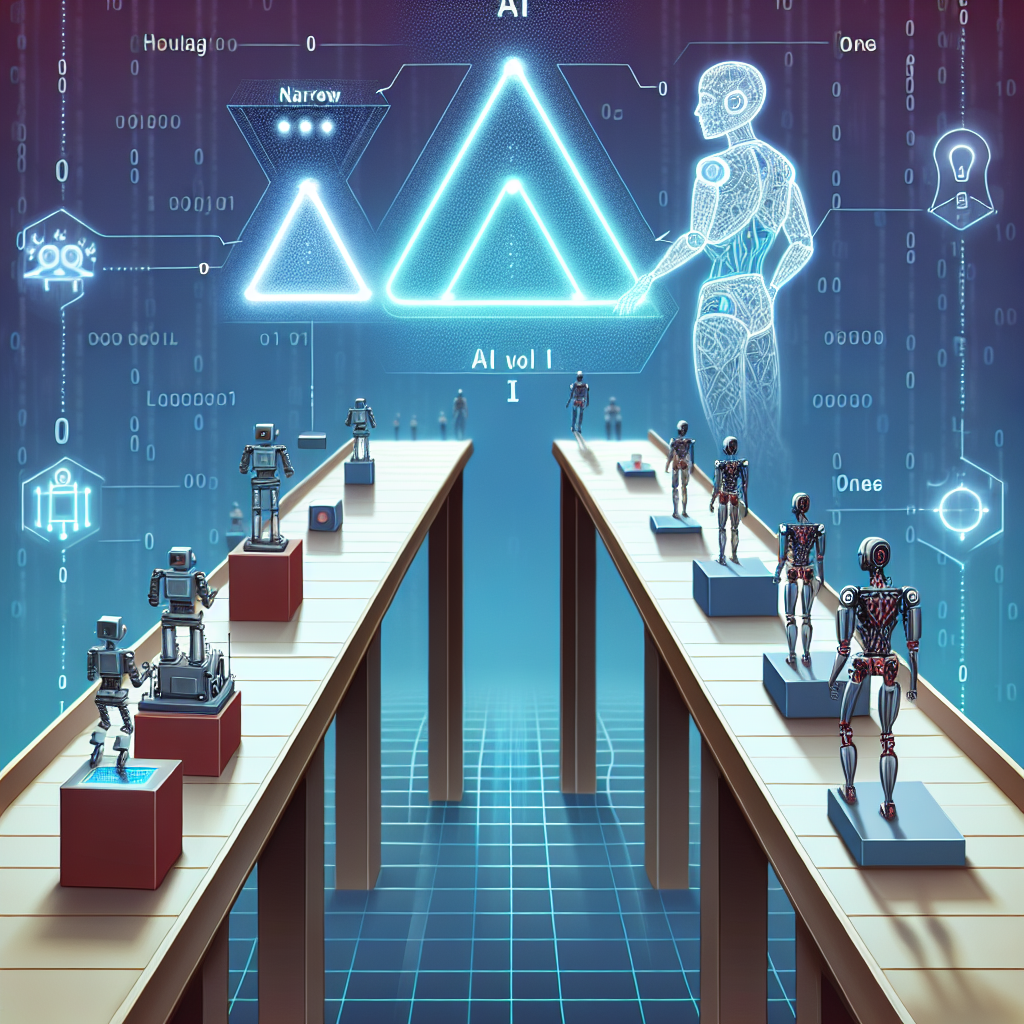Artificial General Intelligence (AGI) is a term that is often used to describe the next step in the evolution of artificial intelligence. While narrow AI systems are capable of performing specific tasks extremely well, AGI aims to bridge the gap between these specialized systems and human-like intelligence. In this article, we will explore what AGI is, how it differs from narrow AI, and the challenges and opportunities that come with developing AGI.
What is AGI?
AGI refers to a system that possesses the ability to understand and learn any intellectual task that a human being can. This includes reasoning, problem-solving, perception, and language understanding. In other words, AGI is capable of generalizing its knowledge and skills across a wide range of tasks, rather than being limited to a specific domain like narrow AI systems.
The goal of AGI is to create machines that can think, reason, and learn in a way that is similar to how humans do. This would enable these machines to adapt to new situations, develop new skills, and even exhibit creativity and emotional intelligence. AGI has the potential to revolutionize industries such as healthcare, finance, education, and transportation, by automating complex tasks and providing valuable insights that can help humans make better decisions.
How is AGI different from Narrow AI?
Narrow AI, also known as weak AI, refers to systems that are designed to perform specific tasks or solve particular problems. These systems are highly specialized and excel at their designated tasks, but they lack the ability to generalize their knowledge and skills to new contexts. Examples of narrow AI include virtual assistants like Siri and Alexa, recommendation systems like Netflix’s algorithm, and self-driving cars.
AGI, on the other hand, is designed to be more flexible and adaptable. It is not limited to a specific task or domain, but rather has the ability to learn and improve its performance across a wide range of tasks. AGI aims to replicate the flexibility and adaptability of human intelligence, allowing machines to reason, learn, and make decisions in a way that is similar to how humans do.
Challenges in Developing AGI
While the potential benefits of AGI are immense, there are several challenges that need to be overcome in order to develop truly intelligent machines. One of the main challenges is creating algorithms that are capable of learning and reasoning across a wide range of tasks, rather than being limited to specific domains. This requires the development of new machine learning techniques that can generalize knowledge and skills in a way that is similar to how humans do.
Another challenge is designing systems that are capable of understanding and interacting with the world in a meaningful way. AGI systems need to be able to perceive their environment, interpret complex sensory information, and make decisions based on this information. This requires the development of advanced robotics, computer vision, and natural language processing technologies that can enable machines to understand and interact with the world in a human-like manner.
Ethical Considerations
As we move closer to the development of AGI, there are also important ethical considerations that need to be taken into account. AGI has the potential to revolutionize industries and improve the quality of life for billions of people, but it also raises concerns about job displacement, privacy, and the potential misuse of AI technologies. It is important for developers, policymakers, and society as a whole to carefully consider the ethical implications of AGI and work together to ensure that these technologies are used responsibly and ethically.
FAQs
Q: Will AGI replace human workers in the workforce?
A: While AGI has the potential to automate many tasks currently performed by humans, it is unlikely to completely replace human workers. Instead, AGI is more likely to augment human capabilities and enable us to focus on higher-level tasks that require creativity, emotional intelligence, and critical thinking.
Q: How close are we to developing AGI?
A: While significant progress has been made in the field of AI, we are still far from achieving true AGI. There are many technical challenges that need to be overcome, as well as ethical considerations that need to be addressed. It is difficult to predict when AGI will be realized, but researchers and developers are working tirelessly to make it a reality.
Q: What are the potential benefits of AGI?
A: AGI has the potential to revolutionize industries such as healthcare, finance, education, and transportation, by automating complex tasks, providing valuable insights, and improving decision-making. AGI has the potential to transform society in profound ways, making our lives easier, safer, and more efficient.
In conclusion, AGI represents an exciting frontier in the field of artificial intelligence. By bridging the gap between narrow AI and human-like intelligence, AGI has the potential to revolutionize industries, improve decision-making, and enhance the quality of life for billions of people. While there are many challenges that need to be overcome in order to develop AGI, the potential benefits are immense. By working together to address these challenges and ethical considerations, we can create a future where intelligent machines coexist with humans in a harmonious and beneficial way.

